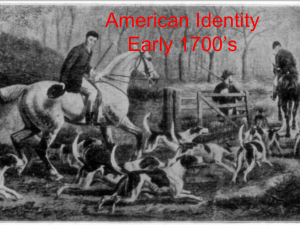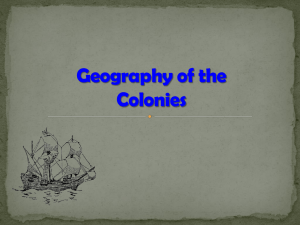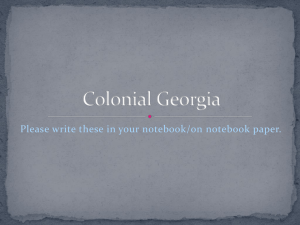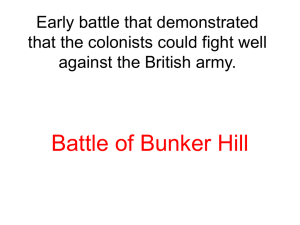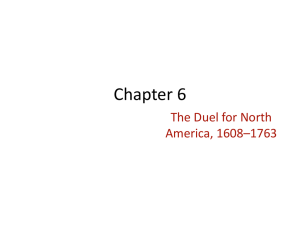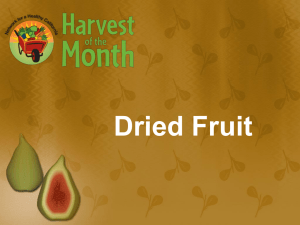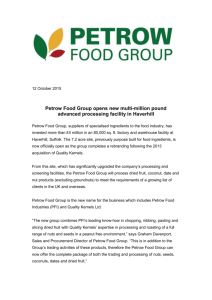Click Me!
advertisement
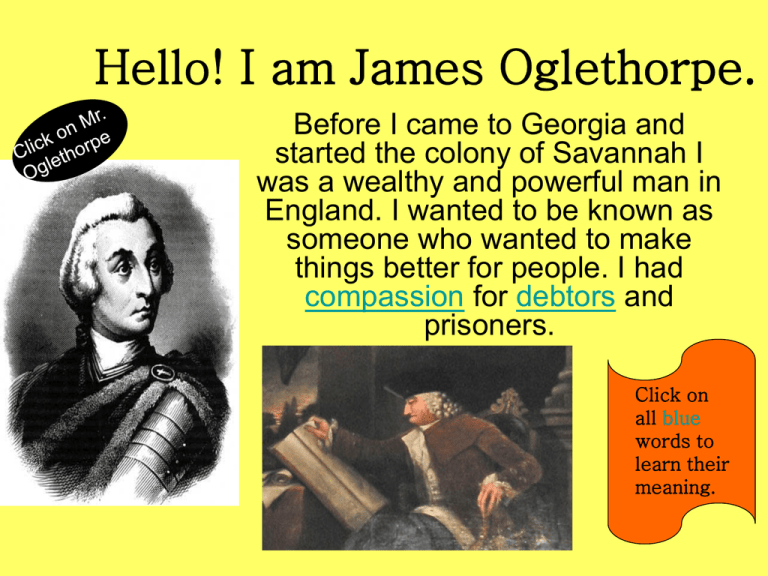
Hello! I am James Oglethorpe. Before I came to Georgia and started the colony of Savannah I was a wealthy and powerful man in England. I wanted to be known as someone who wanted to make things better for people. I had compassion for debtors and prisoners. Click on all blue words to learn their meaning. • There were not enough jobs in England so I had an idea to start a colony in North America and provide land and tools to people who needed it. • I also made rules that no one could be forced to work without pay because I thought slavery was wrong. I believed in liberty for all. • We set sail for Georgia and arrived 3 months later in February of 1733. • We had to cut down trees and build everything in order to live. • The new settlement was called Savannah. This is a plan that I drew out for Savannah before we started building • When I came to Savannah I met a couple of people that became very good friends to me. • Mary Musgrove and Tomochichi. • Tomochichi was a chief of the Yamacraw Creek and did not speak English. • Mary helped Tomochichi and I talk to each other. I treated the Georgia Native American’s with respect and I was honest when I traded with them. Timeline of My Life 1696: I was born. 1733: I settled in Savannah 1732: I sailed to Georgia 1785: I died 1742: Georgia’s first Thanksgiving Living in the days of colonization was very different from how you live today. • We had very small houses. • We had to grow our own food or trade with the Creeks. • We had to make our own clothes. • We had to hunt animals for meat to eat. • We did not have electricity for light, heat or air conditioning. What was life really like in the colonial days? Click on the Television Now go check out this website! Once you go to the site click on the highlighted words and learn some more facts about colonial life. Remember to think about how it is different from the way you live your life now. Click me! • Based on what you have learned so far write down some facts about how life was during the colonial time period. • Now write down some things that you see in your life that are different. • Now write down some things in your life that are similar. Click on the green light to continue How are we going to compare our lives? • • • There is a way that we can compare and contrast two categories and that is called a Venn diagram. In one category you put what makes it different, then the for the other category you put what makes it different. In the middle you put what they share. See the diagram below. Colonial Life Different My Life different same Draw two circles into your scrapbook and label them with once circle named “Colonial Life” and the other circle names “My Life” like the example below. Colonial Life • • • My Life Now fill in the circles with the information that you learned from the video and website and put them into the correct circle. Write the things in the correct circle that you see are in your life that are different from the colonists lives. Write the things in the correct circle that you see are in both your life and the colonists lives. Now that you have compared and contrasted your life to the colonists lives... • you are going to learn how fruit was preserved for winter months. • During the winter the weather was very cold and harsh so we couldn’t grow fruit or have it shipped to us like you can now. • Therefore, we had to dry our fruit so we could eat it later since we needed the nutrients. • We are going to be drying fruit to see what the colonists had to do in order to still have fruit in the winter months. We will be weighing the apple slices to find out their weight before drying and after drying. • Go weigh your apple slice. • Write in the chart: – Wow many days you think it will take the apple slice to dry – What the starting weight is – How much you think the apple slice will weigh once it has dried. Once you have made your predictions answer these questions in your scrapbook… How do you think the colonial people ate the apples? Do you think they ate them dried out or do you think they ate them some other way? What would you do if you had to dry your fruit and then eat it later? How would you eat it? Click the apple when you are ready to move on Throughout the next couple of days.. • We will be watching and recording the progress of our apples as they dry out. • Once they have dried we will try out different ways to eat the dried apples and see which is best to you. • Then we will discover how the colonists actually ate their dried fruit. Click Me! Click here to return back to Savannah
